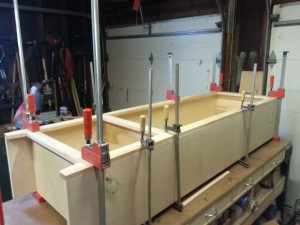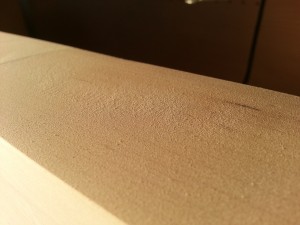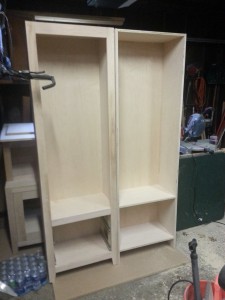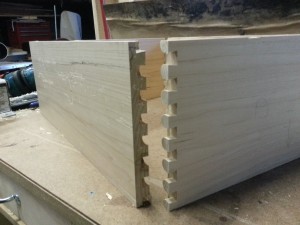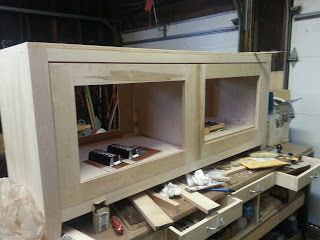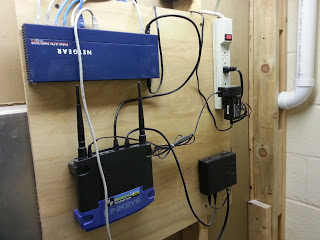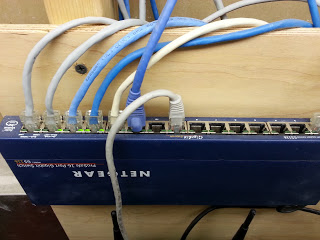Progress on my woodworking project to build a media center has slowed, but is still moving along.
(Also see Part I, or Visit Woodsmith to find Entertainment/Media Center plans in Issue 194).
Both the left and right tower cabinets are assembled and have face frames installed. I expanded both the height and width of the media center towers so that a larger TV could be accommodated as well as more space for storage. The towers are nearly 7′ tall and 24″ wide.
Lots and lots of sanding. The maple plywood just requires a light sanding at 220. The solid maple face frames take a little more time. I’ve been starting at 120 and working my way up to 220.
Here’s the two tower cabinets side-by-side. Space in the garage is now at a premium.
Each of the tower cabinets have two drawers on the bottom. You can see the drawer slides in the picture above. Each drawer is approximately 18.5″ wide and 12.5″ deep. We’ll probably use these drawers for storing BluRay’s and XBox accessories.
The first drawer is almost done, 3 more to go build.
I decided to use dovetails since my wife bought me a new Porter-Cable dovetail jig for Christmas. After spending some time setting up the jig and calibrating my router, I was ready to make some dovetails. My first two attempts didn’t go so well. After tweaking the jig a few more times, I finally dialed in the right settings. It’s a great jig, and I’m anxious to build these drawers and then try it with some other projects.
